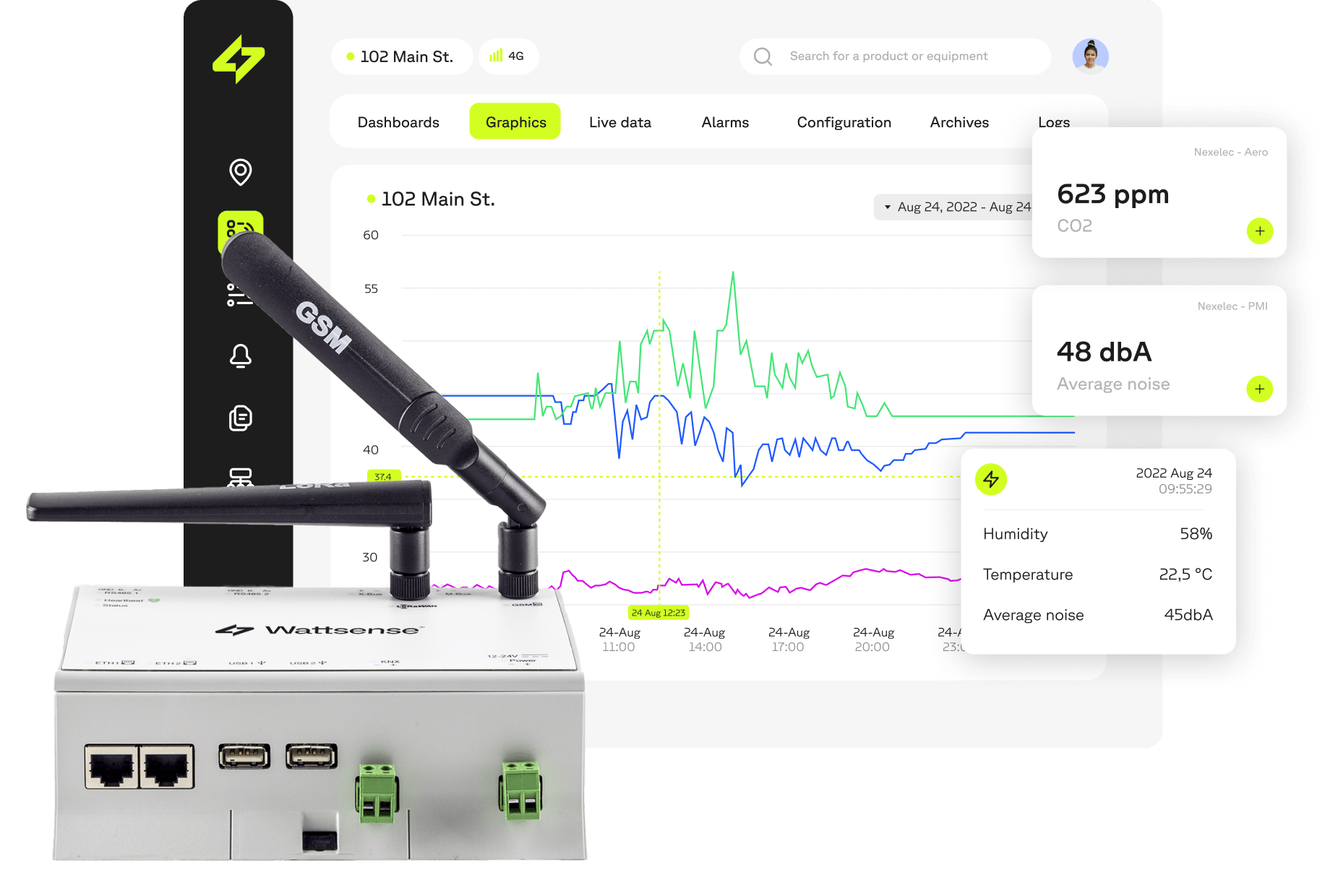What is automation?
Building automation is the process of integrating automation and control technologies and systems to centrally monitor and control building management systems, including heating, ventilation, air conditioning, lighting and security.
The aim is to improve energy efficiency, occupant comfort and maintenance while reducing operating costs and complying with various regulations, such as the BACS decree.
Thanks to automation, buildings can operate more intelligently and efficiently, adapting to changing needs and environmental conditions in real-time.
Today, thanks to advances in new technologies, particularly the IoT (Internet of Things), building automation has become accessible to structures of all sizes, at an affordable cost. The IoT offers the possibility of deploying or modernising a Building Management System (BMS) quickly and easily, No matter the type or size of the building.
This makes it possible to modernise a building without major work, complexity or expense, paving the way for more efficient and sustainable infrastructure management.
This advance means that small and medium-sized businesses can take advantage of the benefits of building automation while complying with regulations, thanks to solutions like Wattsense that are tailored to their constraints.
The simple solution for automating buildings
Our solution lets you monitor and control a building's technical systems remotely and centrally. All without major renovation, equipment changes or additional complexity.

The main automated processes in buildings
Many procedures can be automated. Among the most common are
- Intelligent lighting management: daylight sensors can be used to maximise natural light levels, reducing lighting costs.
- Automated ventilation: ventilation is regulated to maintain an acceptable level of humidity, often between 40 and 60%.
- Temperature adjustment: to a set temperature (19 degrees in offices, for example);
- Preventive maintenance systems.
- Security systems: access management, fire alarms, etc.
The benefits of building automation
As well as simplifying building management procedures, which is a major advantage, building automation offers a number of other benefits.
- Energy efficiency: once a certain temperature is reached, the heating system in a room will go on standby or, conversely, will start up automatically. The same can apply to the lighting in an office or communal area, depending on whether or not there are occupants. If everything is set up properly beforehand, energy savings in a building can be as much as 30%.
- Greater comfort for occupants: ideal temperature throughout the day, blinds closed or raised depending on light levels, regulation of air quality and humidity - all these elements contribute to the well-being of occupants.
- Automated building security: video protection, fire alarms, air quality, and access management for each employee. Automating these tasks on a premises-by-premises basis enhances overall security.
- Automation also enables a predictive and preventive maintenance system, reducing maintenance costs.